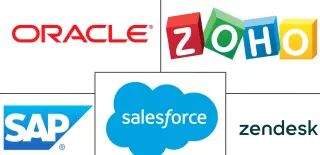How to Fund Your Indie Game: 7 Proven Crowdfunding Strategies

Securing funding is the biggest hurdle for most indie game developers. With 75% of Kickstarter game projects failing to reach their goals, you need smarter strategies than just hoping for viral magic. This guide reveals 7 proven crowdfunding approaches used by successful indie devs to raise $50,000 to $1M+, complete with real-world examples and tactical execution steps.
Crowdfunding Success Rates (2024 Data)
34%
of Kickstarter games succeed
62%
success rate on Indiegogo (flexible funding)
5-10x
higher funding from pre-launch lists
1. Kickstarter: The Gold Standard
Tactics That Triple Success Rates
- 30-day campaigns perform best (vs 45/60-day)
- Offer physical rewards (art books increase pledges 40%)
- Set multiple funding tiers ($25, $50, $100, $500)
Case Study:
"Sea of Stars" raised $1.6M by offering early beta access at $40 tier and vinyl soundtracks at $75.
2. Patreon: The Slow Burn Approach
Monthly Funding Structure
- $3-$20/month tiers for behind-the-scenes access
- Exclusive dev blogs and early builds
- Average successful game Patreon: $2,500/month
Best For
- Long-term development cycles (2+ years)
- Niche genres (visual novels, RPGs)
- Devs with existing audiences
3. Publisher Deals (Without Selling Out)
Revenue Share
20-50% of profits
- No upfront cash
- Lower risk for both
Advance Recoupment
$50K-$500K advance
- Paid back from sales
- Keeps IP ownership
Hybrid Models
Best of both
- Small advance + rev share
- Becoming industry standard
4. Government Grants & Tax Breaks
| Country | Program | Max Funding |
|---|---|---|
| Canada | CMF Experimental Stream | $250,000 |
| UK | UK Games Fund | £50,000 |
| France | CNC Aid | €200,000 |
5. Early Access Done Right
- Steam Early Access works best for sandbox/survival games (7/10 top sellers use it)
- Price at 60-70% of final intended price
- Update every 2-4 weeks to maintain momentum
6. Angel Investors for Indies
Pitching Checklist
- Vertical slice (not prototype) showing core gameplay
- Market analysis showing similar games' sales
- Clear ROI plan (e.g., "We'll break even at 20K copies")
7. Hybrid Approach: Stack Funding
- Example stack: $20K grant + $50K Kickstarter + $30K Patreon (pre-launch)
- Risk mitigation: If one source fails, others compensate
- Proven combo: Government funding validates project for crowdfunding
FAQs
What's the ideal Kickstarter goal amount?
For first-time creators: $15,000-$50,000. Projects seeking under $10K appear amateurish, while over $100K requires proven teams.
How much should I give away to publishers?
Never surrender IP. 30% revenue share is standard for marketing-focused deals. Development funding should be recoupable.
Pro Tip:
Run a "soft launch" campaign 3 months before your main Kickstarter—collect emails from interested backers and refine your pitch based on their feedback.
You might also like
Popular Articles

How to Price Your Indie Game for Maximum Profit (Steam vs Itch.io vs Epic)

How to sell game assets on Unity Store

From Hobby to Profit: How to Turn Your Gaming Passion Into a $100K Business

Best business setup for content creators (LLC vs Sole Proprietor)

AI Video Editing Tools Tested: Which Actually Save Time?
